When it comes to the difference between toads and frogs, these amphibians share the same classification but exhibit several distinctions. Not only do they look different, but frogs and toads also thrive in different habitats. The differences in these amphibians are clear as soon as they are eggs, and can be seen through life as tadpoles and into adulthood.
Frogs and toads are both common amphibians that are frequently found living in gardens, backyards, near pools, and lakes. However, toads can venture further away from sources of water to explore the land.
Toads vs Frogs
Key Takeaways
- Frogs and toads are both amphibians but have plenty of differences.
- They have different appearances and thrive in different habitats.
- Frogs are longer and thinner while toads have shorter, more rounded bodies.
- Toads are a subgroup of frogs.
Toads
Toads are a subgroup of frogs but can be differentiated by their rough skin and shorter legs. These amphibians are also known to spend more time on land but will venture to ponds, lakes, or other bodies of water for the mating season each spring. Certain toad species can also grow to be quite large, such as cane toads.
Common Types of Toads

Common toad species include;
- Cane toad
- American toad
- Fowler’s toad
- Great Plains toad
- Western toad
- Green toad
Frogs
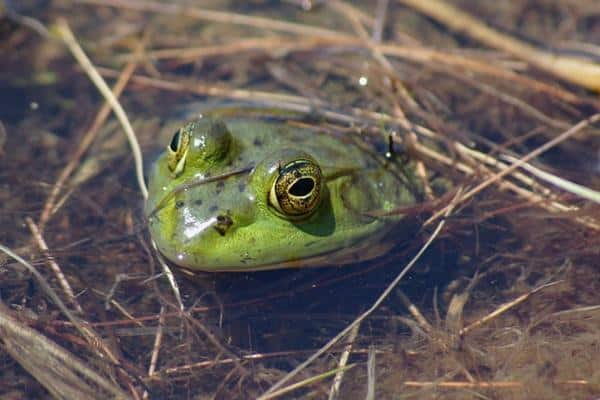
Frogs are more aquatic animals than toads and will spend much of their life in water. Some types of frogs live in water for their entire lives, rarely venturing onto land.
These amphibians are known for having long and slender bodies, and extra long back legs. These back legs can let them jump long distances. Different types of frogs can vary greatly in color, from dark browns and grays to bright blues and reds.
Common Types of Frogs
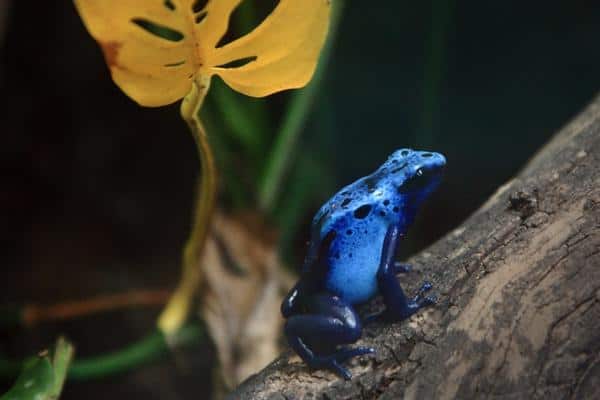
Some of the common frog species include;
- Tree frog
- Blue poison dart frog
- Goliath frog
- Tomato frog
- Wood frog
- Northern leopard frog
Major Differences
There are plenty of major differences when comparing toads vs frogs, not only when it comes to their appearance but also when it comes to their life cycle, habitats they thrive in, and the way they take down their prey.
Upon first glance, a toad and a frog might look like the same amphibian, but they are vastly different animals. A closer look will reveal all of the differences between toads and frogs.
1. Color
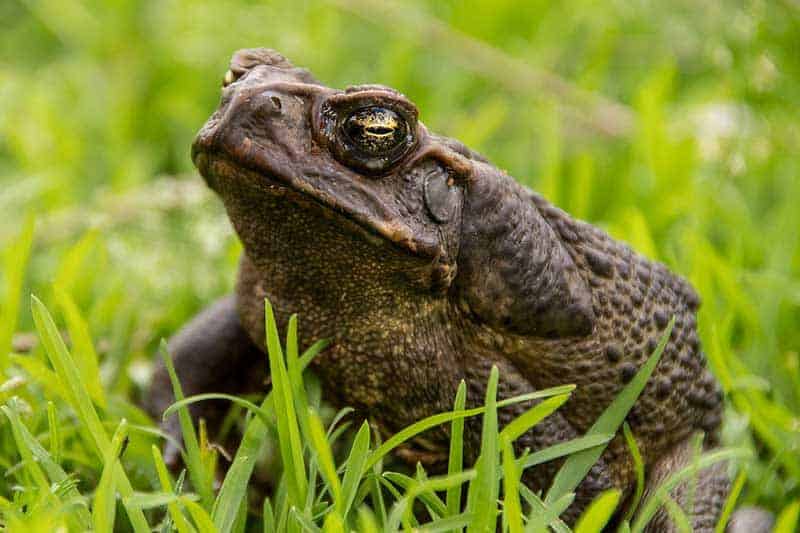
For the most part, toads are seen in dull or dark colors, such as green, grey, or brown. Even different species of toads will not vary much from these kinds of colorings. However, frogs can be found in many different colors.
They can be dark greens or browns as well, but multiple types of frogs have bright colors. Poison dart frogs are just one such frog that is seen with bright and vibrant marks.
Of course, most of the time when frogs have bright colors it is a clear sign that they can be poisonous. While some frogs are only dangerous if eaten by predators, others have poison coating their skin that will kill anyone that touches it. Just like frogs, some toads can also have poison coating their skin.
2. Shape
Frogs and toads also vary in their shape. Frogs tend to be longer and skinnier than toads. Toads have more rounded bodies. The rounded bodies plus short legs make toads appear fat, especially when squatting. Certain types of toads, like cane toads, can also grow to be quite large, and most frog species are smaller.
3. Skin
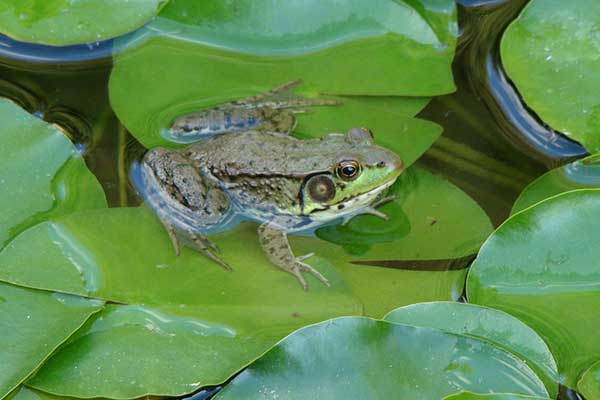
One of the main differences between toads and frogs is their skin. Toads have rough skin that usually has warts on it. They also have glands capable of secreting poison when picked up by predators.
While most toads don’t have deadly poison, it is unpleasant and effective in getting most predators to let them go. On the other hand, frogs are known for smooth and slimy skin.
This is because frogs need their skin to be moist all the time, and they produce mucus to keep it from drying out. Since frogs need to keep their skin moist they will stay near bodies of water, like lakes and ponds. Certain types of frogs can be completely aquatic, but many of them spend time on land as well.
4. Habitat
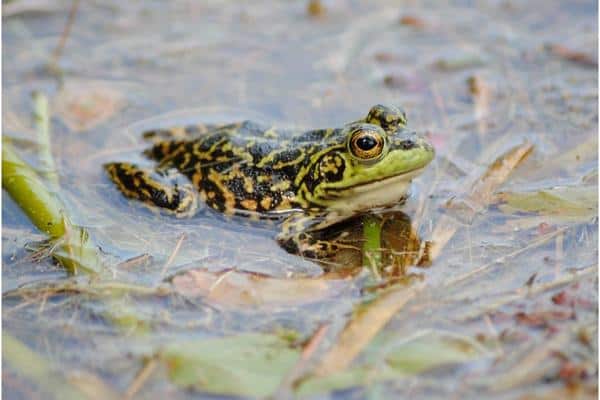
Frogs have lungs for breathing oxygen, but they spend a good amount of time in the water. Some frog species live completely aquatic lives while others may spend more time on land.
These amphibians thrive in wet habitats like rainforests, swamps, or forests. Some types of frogs are even found in deserts, using what little water is available to survive. Toads spend more time on land, and usually only return to larger bodies of water when the mating season starts.
5. Eggs
Frogs and toads both need to find bodies of water for mating and laying eggs. However, once they lay eggs the difference between them is clear. A frog will lay eggs in clumps in the water, but toads lay eggs in ribbons.
These can sometimes even be seen tangled in water plants. Eggs for both toads and frogs are referred to as spawn. Once they hatch, frogs and toads will go from their egg to their tadpole state.
6. Tadpoles

Even though frogs and toads both start as tadpoles, they appear different even in this form. When it comes to frogs, will be longer and skinnier than toad tadpoles. Tadpoles for toads tend to be shorter and more rounded out. Toad tadpoles will also be completely black, while the tadpoles for frogs are black and marked with flecks of gold.
7. Legs
Both toads and frogs have long back legs, but a frog’s back legs are much longer. The front legs of frogs will be longer too, in order to let them leap long distances. Having longer legs also allow frogs to quickly swim through water.
Even though a toad’s legs are not as long, they also serve an important function. During the winter and summer when toads burrow to survive harsh temperatures, their legs allow them to quickly bury themselves.
A frog’s back legs are longer than their body, which is why they can jump so far. However, toads have back legs shorter than their bodies. They can move in small hops, but toads will also walk and crawl.
8. Teeth
Many people assume that neither frogs nor toads have any teeth, but that is not completely true. Toads do not have any teeth at all, but frogs have a few. Most types of frogs will have a few teeth in their upper jaws which is useful for holding onto insects and other prey they catch.
This also means the bites of frogs will usually be more painful than bites from toads. Of course, these amphibians rarely bite people unless threatened or mishandled. Despite having teeth, frogs do not use them to chew.
The Similarities
While there are plenty of differences between frogs and toads to be aware of, it’s important to note that they also share some common ground. Frogs and toads, despite their distinctions, exhibit similarities in their diets and feeding habits, belonging to the same classification within the realm of amphibians.
1. Diet
When it comes to their diets, frogs and toads feed on many of the same things. Their exact diet will vary depending on the region they live in and what is available. These amphibians are mainly depicted feeding on flies, which are a big part of their diet, but they will eat plenty of insects.
Toad and frog diets consist of;
- Mosquitos
- Grasshoppers
- Dragonflies
- Flies
- Moths
- Fish
Larger frogs and toads will sometimes even eat small frogs, mice, and snakes. Captive frogs have been able to adapt to eat already dead food, but frogs and toads in the wild rely on sensing motion to find prey. Some wild frogs may even starve before eating dead bugs.
3. Feeding
Frogs and toads have similar habits when it comes to hunting and feeding. Their exact feeding habits will vary based on their habitat, but both of these amphibians are considered carnivorous. They actively seek out prey, mainly insects, and have long sticky tongues that let them catch prey. Both frogs and toads need movement for sensing food, so they will not feed on dead bugs or animals. Larger types of toads may go after animals like mice and will use their front legs to hold down prey.
4. Classification
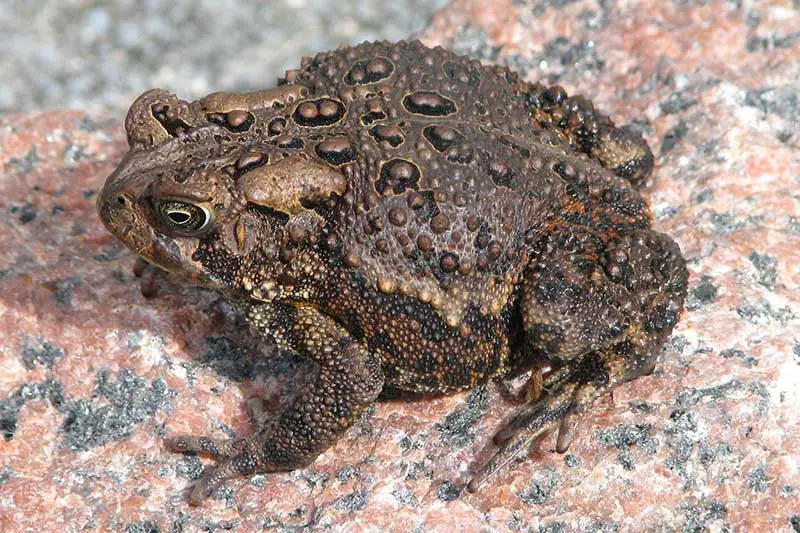
Toads and frogs are actually found under the same classification. They have the same kingdom and order as well. When it comes to the taxonomical hierarchy for frogs and toads, it does not vary until the family category. Toads are in the Bufonidae family while frogs fall under the Ranidae family.
Conclusion
While toads are considered a subspecies of frogs, these amphibians have numerous differences. Some of the differences are more obvious, like color and size, but when looking for differences at the egg or tadpole stage you need to look even closer.
In addition to what makes them so different, frogs and toads also have plenty of similarities. They have similar diets and feeding habits, and will often be found in the same regions. Frogs and toads are common backyard amphibians and are frequently spotted in the spring and summer seasons.




